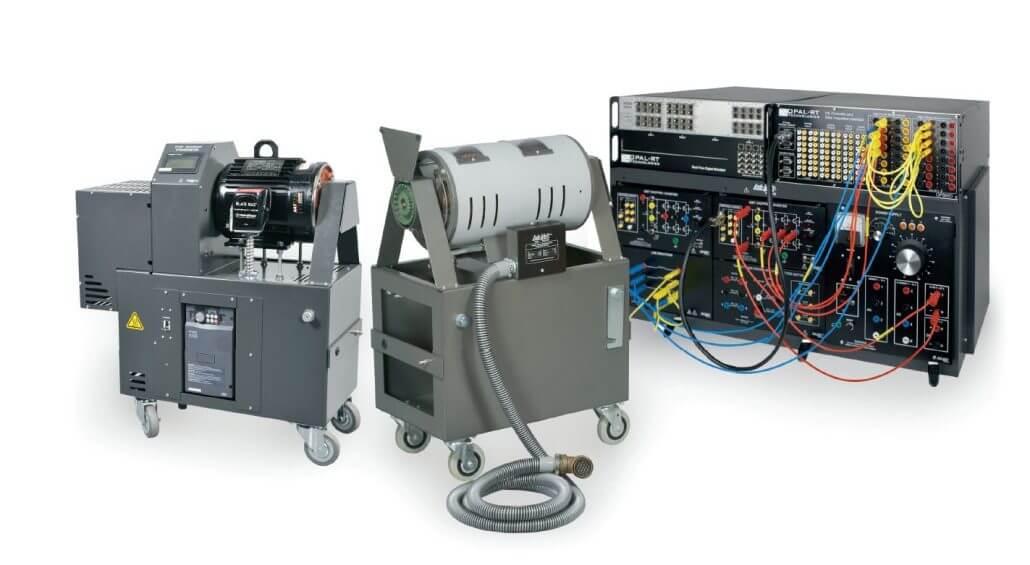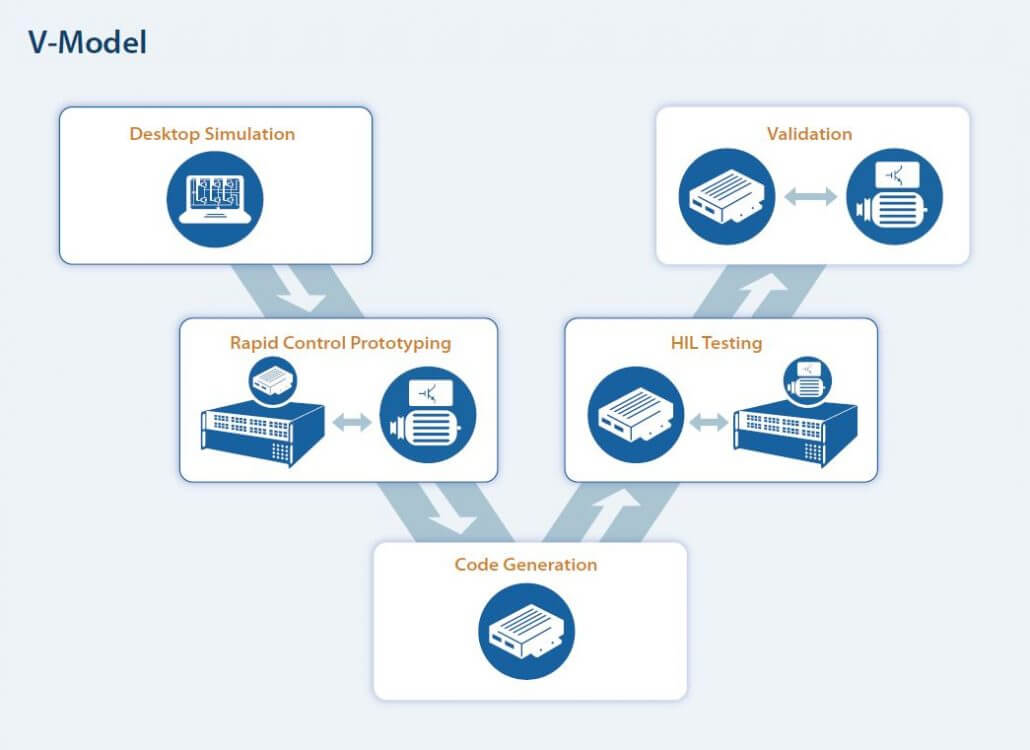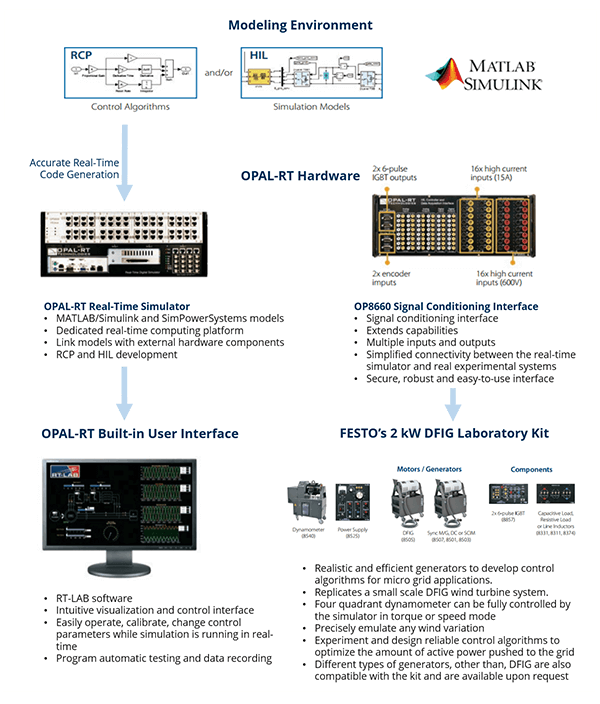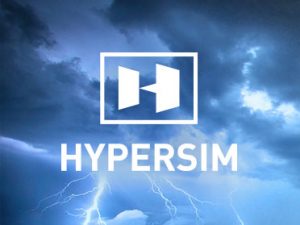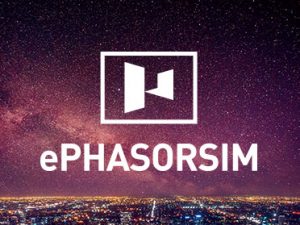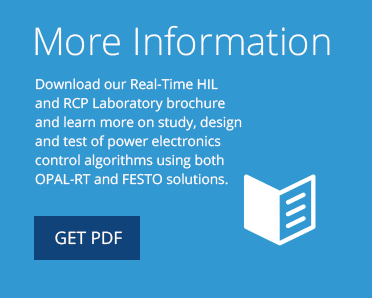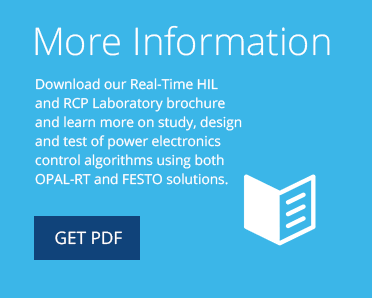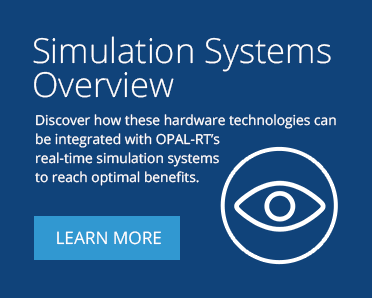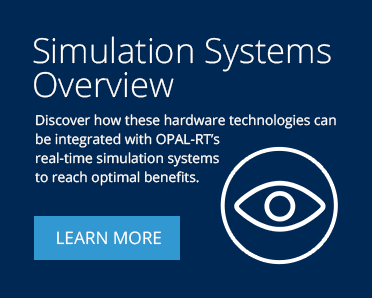HIL and RCP Simulation Systems for Wind Turbine Laboratory
This laboratory combines the best of both OPAL-RT and Festo solutions to deliver academic researchers and teachers with the ideal Hardware-in-the-Loop (HIL) and Rapid Control Prototyping (RCP) simulation system to conduct experiments and teach in the fields of electrical machinery, power converters and wind energy generation.
The OPAL-RT real-time simulators can be seamlessly interfaced with Festo’s 2 kW Doubly-Fed Induction Generator (DFIG) Laboratory Kit to help you achieve your research and teaching objectives. The two Festo 6-pulse IGBT modules are controlled directly by the OPAL-RT simulator’s FPGA and the Simulink model can be modified easily to test various type of control algorithms. This solution is also ideal if you already have your own hardware like IGBT or motors, as they can be easily interfaced with the simulator.
Electric Motor Laboratory Curriculum Goals
Inspired from the industry, the HIL and RCP approaches make it possible to test, validate and reduce controller development in a secure environment. The OPAL-RT system, combined with Festo hardware, enables one to fully teach the V-cycle principles used in the industry. Students and researchers can build a model and then validate the same model against a real system.
Rapid Control Prototyping
With RCP, the plant is real (real IGBT or generators) and the controller algorithm is running inside the real-time simulator. This configuration enables one to quickly test different control algorithms without worrying about the controller’s platform used, like DSP or FPGAs. Users can focus on the algorithms instead of spending a precious amount of time debugging and implementing the algorithm inside a proprietary platform (DSP). In short, the real-time simulator makes it easy to go from Simulink® models to a real working prototype in a few clicks.
HIL Testing
With HIL, the controller is real and the plant is virtual. It is not always practical to do controller development on a real system for multiple reasons like security, availability and the high risk of damaging the equipment. HIL makes it possible to test the control against a safe and accurate virtual model before connecting to the real plant.
Laboratory Highlights and Benefits
Study, Design and Test
- Power electronics controls
- Validation of model against experimental results
- Integration of renewable energy sources into the grid
- System behavior under nominal and extreme condition
Highlights
Benefits
- Premium teaching solution
- Easy configuration and connectivity and short setup time
- Excellent coverage of experimental needs
- Customizable and scalable
- Reliable technical support and training
Easy Integration with your Curriculum
The kit is delivered with a series of working examples and case studies that easily integrate with your curriculum:
Renewable Energy
- Doubly fed induction generation
- Inverter control (6-pulse IGBT)
- Back-to-back inverter control
- DC bus active and reactive power control
Closed Loop Motor Control Models
- Permanent magnet DC motor speed control
- Squirrel cage induction machine speed Control
- Permanent magnet synchronous motor speed control
- Permanent magnet synchronous motor fl ux angle correction
A Complete Solution
Courseware
OPAL-RT's coursewares represent a valuable asset for customers’ training, educational or research program. Get a sample of our Rapid Control Prototyping Energy Conversion Kit (RCP-EC2K) and benefit from hands-on design and test practices and experiments on the fields of Electrical Machinery, Power Converters applications and Wind Energy Conversion Systems (WECS).

